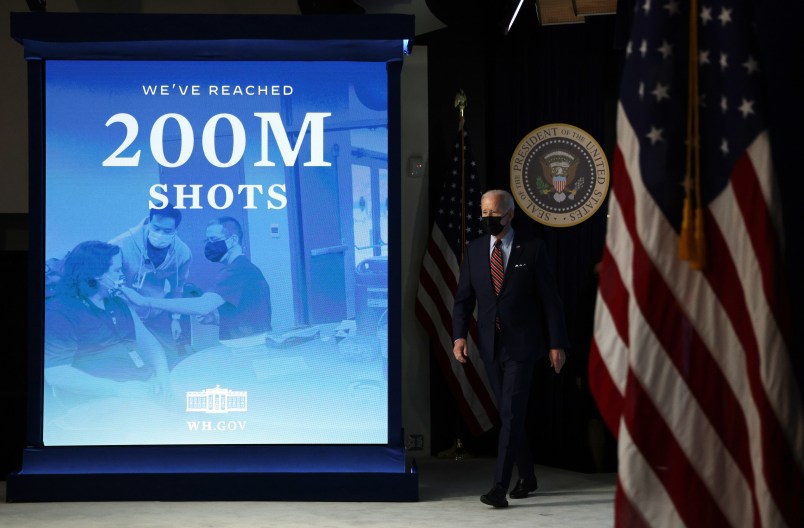President Biden met his first COVID-19 vaccination goal: 200 million doses in the first hundred days.
Now, the administration is set to announce a new goal.
In a speech later Tuesday, Biden will announce plans to have 70 percent of all American adults vaccinated by July 4.
It’s a symbolically important goal, but one that, administration officials said, will come with a retooling of the country’s strategy to vaccinate the population against COVID-19.
“We’re going to focus increasingly on groups of people that will take time to reach,” a senior administration official told reporters on Tuesday.
The new approach will see FEMA focus more on mobile testing sites and on “smaller, pop-up vaccination sites” instead of the large-scale injection hubs that have been a hallmark of the Biden administration’s approach so far.
It’s been a successful campaign, with 246 million doses having been administered as of this writing, starting from the time vaccines first began entering Americans in December 2020. The U.S. has leapt ahead of peer countries in the pace and percentage of those vaccinated.
That came after the Trump administration lobbied against funding the vaccination effort, while largely leaving it to the states to undertake the campaign without any federal coordination or plan for inoculating the country.
In a speech Tuesday afternoon, two officials said, Biden will emphasize how the new approach to the vaccination campaign will make it easier for people to get the shot. That will include directing pharmacies that are distributing vaccine as part of a federal partnership to make it available via walk-in appointments, while also shifting more money to ad campaigns designed to reach communities that have not yet been inoculated.
The new approach comes as the U.S. has hit a milestone: many states have more vaccine supply than they have demand while, the New York Times reported, the average number of people getting their first dose has halved since it peaked on April 13.
Biden plans on addressing this through more vaccine deliveries to rural health centers, and through $250 million in funding for community health organizations to hire staffers to conduct vaccine outreach campaigns. The new approach also directs $100 million in American Rescue Plan funding for vaccine outreach campaigns in rural America.
It’s not entirely clear what’s driving the slow-down in demand for vaccine. CDC data suggests that younger Americans at lower risk of serious COVID have received a lower share of vaccine doses, as have rural Americans.
On a call with reporters, a senior administration health official emphasized that Americans who are younger or at lower risk of complications from the virus must still get the shot.
“Even if you don’t get symptoms, you are part of the chain of transmission,” the official said. “You are part of the outbreak.”
The same official added that achieving the goal would mean a drastic loosening of public health measures aimed at stopping the spread of the virus.
“At a 70 percent vaccination rate, we’re gonna look different as a country than we do today,” the official said. “There are going to be far less public health restrictions.”



